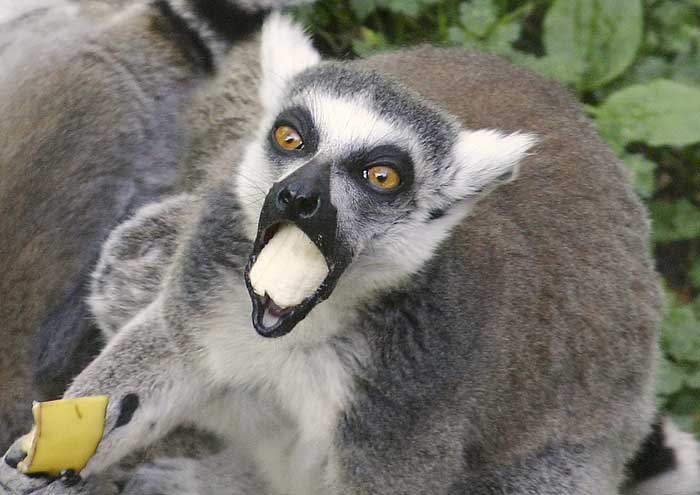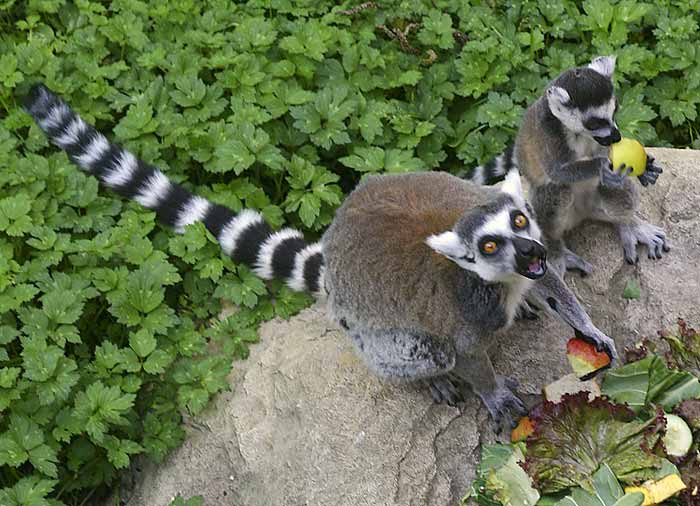Ring-tailed lemurs are
opportunistic omnivores, with their diets consisting of 70% of
fruits (which helps to quench their thirst) and the other 30% consists
of leaves, flowers, bark, sap, some insects, etc. The Tamarina
tree is a significant food source, providing a year-round food supply.
Ring-tailed lemurs sit on their hind legs and hold fruit in their hands.
They bite off small pieces with their back teeth so that all of the
juice runs into their mouth, savoring every last drop. Because
some live in arid environments, these lemurs get water from succulent
plants and water that accumulates in crevices.
|

Photograph - © Chris Lee 2004 Location - Grangewood
Zoo |

Photograph - © Chris Lee 2004 Location - Colchester
Zoo

Photograph - © Chris Lee 2004 Location -
Colchester Zoo |
Ring-tailed lemurs have similar digestive systems to
other primates that harvest all usable nutrients from their food.
Any excesses get stored as fat. Equipped with a
closed circulatory system, lemurs are able to transport nutrients and
oxygen to their entire body and carry away wastes effectively.
Like all other mammals, their circulatory system consists of two
circuits and a four-chambered heart. The blood is completely
contained within blood vessels and flows in a complete circuit.
Blood flow can also be directed to specific parts of the body to help
with specialized activities; for example, blood flows to vessels
around the intestines after eating. The presence of a closed
circulatory system also helps to support the lemur's active lifestyle. |